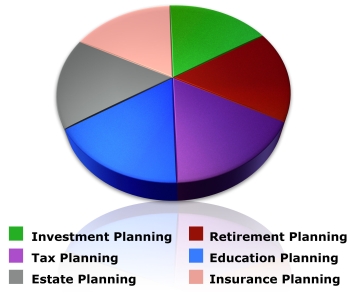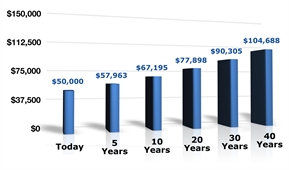 With approximately 94% of American workers covered by Social Security and 65 million people currently receiving benefits, keeping Social Security healthy is a major concern.1 Social Security isn’t in danger of going broke — it’s financed primarily through payroll taxes — but its financial health is declining, and benefits may eventually be reduced unless Congress acts.
With approximately 94% of American workers covered by Social Security and 65 million people currently receiving benefits, keeping Social Security healthy is a major concern.1 Social Security isn’t in danger of going broke — it’s financed primarily through payroll taxes — but its financial health is declining, and benefits may eventually be reduced unless Congress acts.
Each year, the Trustees of the Social Security Trust Funds release a detailed report to Congress that assesses the financial health and outlook of this program. The most recent report, released on June 2, 2022, shows that the effects of the pandemic were not as significant as projected in last year’s report — a bit of good news this year.
Overall, the news is mixed for Social Security
The Social Security program consists of two programs, each with its own financial account (trust fund) that holds the payroll taxes that are collected to pay Social Security benefits. Retired workers, their families, and survivors of workers receive monthly benefits under the Old-Age and Survivors Insurance (OASI) program; disabled workers and their families receive monthly benefits under the Disability Insurance (DI) program. Other income (reimbursements from the General Fund of the U.S. Treasury and income tax revenue from benefit taxation) is also deposited in these accounts.
Money that’s not needed in the current year to pay benefits and administrative costs is invested (by law) in special government-guaranteed Treasury bonds that earn interest. Over time, the Social Security Trust Funds have built up reserves that can be used to cover benefit obligations if payroll tax income is insufficient to pay full benefits, and these reserves are now being drawn down. Due to the aging population and other demographic factors, contributions from workers are no longer enough to fund current benefits.
In the latest report, the Trustees estimate that Social Security will have funds to pay full retirement and survivor benefits until 2034, one year later than in last year’s report. At that point, reserves will be used up, and payroll tax revenue alone would be enough to pay only 77% of scheduled OASI benefits, declining to 72% through 2096, the end of the 75-year, long-range projection period.
The Disability Insurance Trust Fund is projected to be much healthier over the long term than last year’s report predicted. The Trustees now estimate that it will be able to pay full benefits through the end of 2096. Last year’s report projected that it would be able to pay scheduled benefits only until 2057. Applications for disability benefits have been declining substantially since 2010, and the number of workers receiving disability benefits has been falling since 2014, a trend that continues to affect the long-term outlook.
According to the Trustees report, the combined reserves (OASDI) will be able to pay scheduled benefits until 2035, one year later than in last year’s report. After that, payroll tax revenue alone should be sufficient to pay 80% of scheduled benefits, declining to 74% by 2096. OASDI projections are hypothetical, because the OASI and DI Trust Funds are separate, and generally one program’s taxes and reserves cannot be used to fund the other program. However, this could be changed by Congress, and combining these trust funds in the report is a way to illustrate the financial outlook for Social Security as a whole.
All projections are based on current conditions and best estimates of likely future demographic, economic, and program-specific conditions, and the Trustees acknowledge that the course of the pandemic and future events may affect Social Security’s financial status.
You can view a copy of the 2022 Trustees report at ssa.gov.
Many options for improving the health of Social Security
The last 10 Trustees Reports have projected that the combined OASDI reserves will become depleted between 2033 and 2035. The Trustees continue to urge Congress to address the financial challenges facing these programs so that solutions will be less drastic and may be implemented gradually, lessening the impact on the public. Many options have been proposed, including the ones below. Combining some of these may help soften the impact of any one solution.
- Raising the current Social Security payroll tax rate (currently 12.4%). Half is paid by the employee and half by the employer (self-employed individuals pay the full 12.4%). An immediate and permanent payroll tax increase of 3.24 percentage points to 15.64% would be needed to cover the long-range revenue shortfall.
- Raising or eliminating the ceiling on wages subject to Social Security payroll taxes ($147,000 in 2022).
- Raising the full retirement age beyond the currently scheduled age of 67 (for anyone born in 1960 or later).
- Raising the early retirement age beyond the current age of 62
- Reducing future benefits. To address the long-term revenue shortfall, scheduled benefits would have to be immediately and permanently reduced by about 20.3% for all current and future beneficiaries, or by about 24.1% if reductions were applied only to those who initially become eligible for benefits in 2022 or later.
- Changing the benefit formula that is used to calculate benefits.
- Calculating the annual cost-of-living adjustment (COLA) for benefits differently.
A comprehensive list of potential solutions can be found at ssa.gov/OACT/solvency/provisions.
1) Social Security Administration, 2022
IMPORTANT DISCLOSURES
Altum Wealth Advisors does not provide investment, tax, or legal advice via this website. The information presented here is not specific to any individual’s personal circumstances. To the extent that this material concerns tax matters, it is not intended or written to be used, and cannot be used, by a taxpayer for the purpose of avoiding penalties that may be imposed by law. Each taxpayer should seek independent advice from a tax professional based on his or her individual circumstances. These materials are provided for general information and educational purposes based upon publicly available information from sources believed to be reliable—we cannot assure the accuracy or completeness of these materials. The information in these materials may change at any time and without notice.
CIRCULAR 230 NOTICE: To ensure compliance with requirements imposed by the IRS, this notice is to inform you that any tax advice included in this communication, including any attachments, is not intended or written to be used, and cannot be used, for the purpose of avoiding any federal tax penalty or promoting, marketing, or recommending to another party any transaction or matter.
Prepared by Broadridge Investor Communication Solutions, Inc. Copyright 2022.
Prepared for Altum Wealth Advisors
Steven Cliadakis, MBA, CFP®, AIF®, Managing Director, Financial Planner
Miste Cliadakis, CWS®, AIF®, Managing Director, Financial Planner

 The 2015 Budget Bill, signed into law on November 2nd, will put an end to two popular Social Security claiming loopholes associated with the restricted application and file-and-suspend claiming options.
The 2015 Budget Bill, signed into law on November 2nd, will put an end to two popular Social Security claiming loopholes associated with the restricted application and file-and-suspend claiming options.








